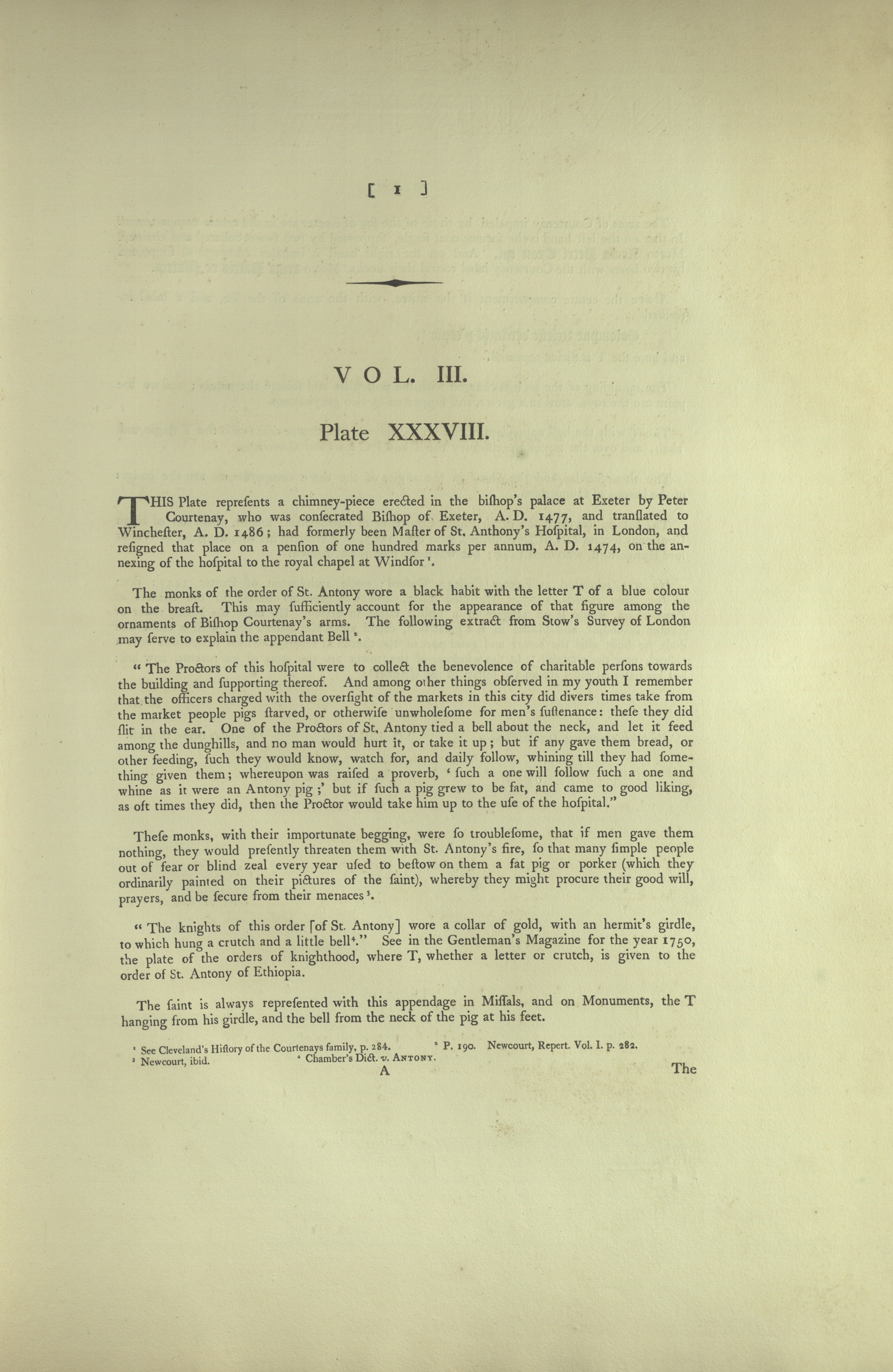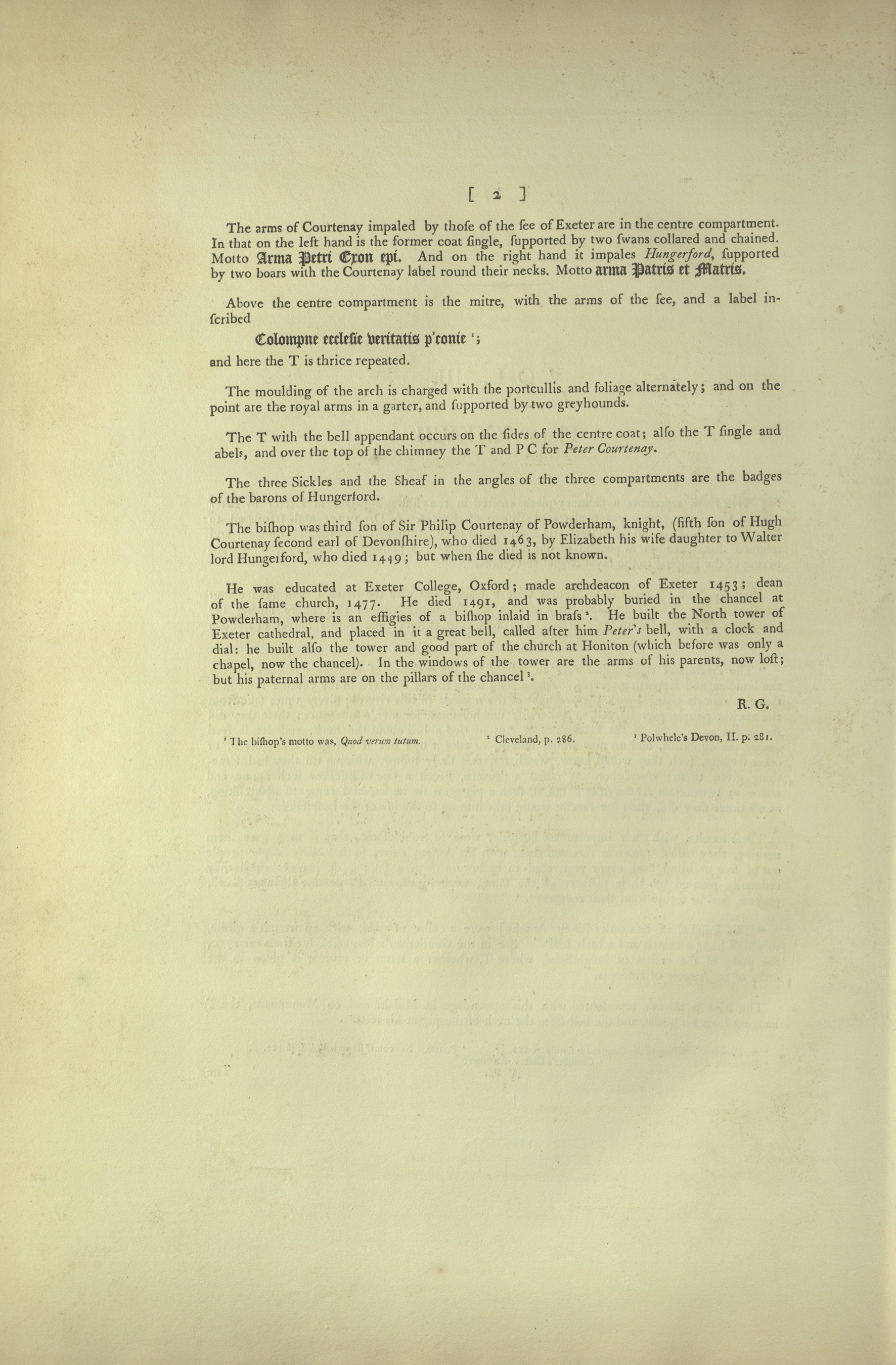THIS Plate represents a chimney-piece erected in the bishop’s palace at Exeter by Peter Courtenay, who was consecrated Bishop of Exeter, A.D. 1477, and translated to Winchester, A.D. 1486; had formerly been Master of St. Anthony’s Hospital, in London, and resigned that place on a pension of one hundred marks per annum, A.D. 1474, on the annexing of the hospital to the royal chapel at Windsor1.
The monks of the order of St. Anthony wore a black habit with the letter T of a blue colour on the breast. This may sufficiently account for the appearance of that figure among the ornaments of Bishop Courtenay’s arms. The following extract from Stow’s Survey of London may serve to explain the appendant Bell2.
“The Proctors of this hospital were to collect the benevolence of charitable persons towards the building and supporting thereof. And among other things observed in my youth I remember that the officers charged with the oversight of the markets in this city did divers times take from the market people pigs starved, or otherwise unwholesome for men’s sustenance: these they did slit in the ear. One of the Proctors of St. Anthony tied a bell about the neck, and let it feed among the dunghills, and no man would hurt it, or take it up; but if any gave them bread, or other feeding, such they would know, watch for, and daily follow, whining till they had something given to them; whereupon was raised a proverb, ‘such a one will follow such a one and whine as it were an Anthony pig;’ but if such a pig grew to be fat, and came to good liking, as oft times they did, then the Proctor would take him up to the use of the hospital.”
These monks, with their importunate begging, were so troublesome, that if men gave them nothing, they would presently threaten them with St. Antony’s fire, so that many simple people out of fear or blind zeal every year used to bestow on them a fat pig or porker (which they ordinarily painted on their pictures of the saint), whereby they might procure their good will, prayers, and be secure from their menaces3.
“The knights of this order [of St. Antony] wore a collar of gold, with an hermit’s girdle, to which hung a crutch and a little bell4.” See in the Gentleman’s Magazine for the year 1750, the plate of the orders of knighthood, where T, whether a letter or crutch, is given to the order of St. Antony of Ethiopia.
The saint is always represented with this appendage in Missals, and on Monuments, the T hanging from his girdle, and the bell from the neck of the pig at his feet.
1See Cleveland’s History of the Courtenays family, p. 284.
2P. 190. Newcourt, Repert. Vol. I. p. 282.
3Newcourt, ibid.
4Chamber’s Dict. v. ANTONY.


